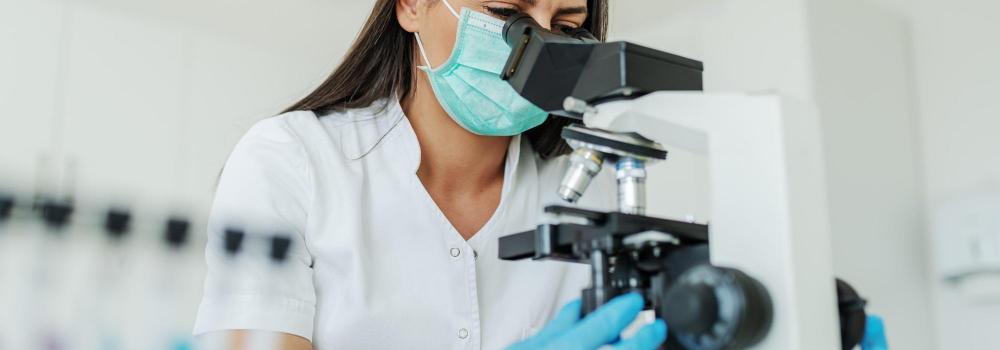In any laboratory, it’s the results that matter. But not adhering to temperature and humidity requirements can put your results and the reputation of your facility on the line. Read on to learn more about how to effectively monitor the environment of your lab to maintain regulatory compliance.
When temperature and humidity aren’t monitored and appropriately documented, it can bring a lab’s entire body of work into question, affect future funding, and lead to distrust and morale challenges among the lab teams and their oversight personnel. By carefully monitoring temperature and humidity, every team and company will have the data they need to back their results. Plus, accurate temperature and humidity monitoring requirements help to avoid any future distraction over the validity and reliability of test results.
Ideal Laboratory Temperature and Humidity Conditions
Temperature and humidity are just two factors that need to be upheld to avoid scrutiny, contamination, comfort for personnel, and maintain a positive safety culture.
In the U.S., the Food and Drug Administration’s regulatory guidelines outline an optimal temperature for labs as being between 68 °F and 77 °F (20 °C and 25 °C) with humidity levels somewhere between 30% and 50%. These two factors are vital to every laboratory environment for countless reasons, not the least of which is quality control. Improper temperature and humidity controls can lead to the following:
- Contamination of specimens
- Poor bacteria growth or arrest
- Static buildup on some instruments and equipment
- Calibration errors and measurement challenges
- Problematic uncertainty ratios about the results' efficacy
With 7 billion clinical lab tests performed each year in the U.S. alone, the need for ideal laboratory conditions across all experiments for reliable and trustworthy results is crucial.
Ensure the Efficacy of All Laboratory Results
When you can show measured consistency for temperature and humidity throughout all laboratory work phases, you’ll face fewer questions about the results, and you’ll have more competitive accuracy and uncertainty ratios.
Laboratory work should always be viewed in context of the entire lab setting to ensure the safety and efficacy of experiments. Therefore, all laboratory personnel should have a clear understanding of their laboratory environmental controls, capabilities and limitations, and how to use them properly.
To that end, every facility should have a climate control strategy, complete with climate goals informed by the Food and Drug Administration, World Health Organization, Occupational Safety and Health Administration, and other oversight organizations, depending upon the work.
How to Create a Temperature and Humidity Compliance Strategy
By creating a plan for climate and ventilation and including all personnel involved, you craft a blueprint for achievable goals for all experiments as well as fail-safes, such as how to respond to, overcome, and resolve any issues or malfunctions. Here’s how to get started:
- Outline the work being completed along with the temperature controls necessary for consistent results
- Include lower and higher temperature tolerance levels according to the work and the laboratory
- List the tools and equipment in the laboratory that require the maintenance of temperature and humidity for proper functioning and measurements
- Install a reliable monitoring system to ensure you have the data needed to report the results of experimental work
- Create an operational process for monitoring and evaluating lab conditions, including temperature and humidity, along with a response plan for malfunctions
Primex OneVue Can Help
Crafting a plan and installing the right climate control equipment is only half the battle. Maintenance and monitoring are the only way to ensure the validity and reliability of results ongoing.
Monitoring all critical variables, including temperature and humidity, is vital. You need to evaluate fluctuations and know when there is a problem so you can respond swiftly. The best way to do this is with the right monitoring solutions. By installing reliable automated monitoring equipment such as the OneVue Sense suite of environmental monitoring technology and OneVue® web-based software platform, you’ll have access to historical data with reports on fluctuations, thresholds that were and were not met, and ideally, you’ll be able to use these insights to link the data to causes.
Minimizing risk of inaccurate lab results and quickly determining the cause of problematic temperature and humidity fluctuations requires an active mindset. Create a plan that all personnel are aware of and participate in to some degree, and you’ll find you have an empowered team with insights and achievements that lead the way in your industry.
For precision climate control monitoring, and competitive, compliant lab results, consider OneVue Sense temperature monitoring. It’s the best way to capture and monitor vital data for every indoor environment seamlessly. Reach out to discover how our solution can help today!
References:
https://www.fda.gov/media/73912/download
https://www.acla.com/value-of-lab-testing/
https://www.primexinc.com/monitoring/temperature-monitoring
